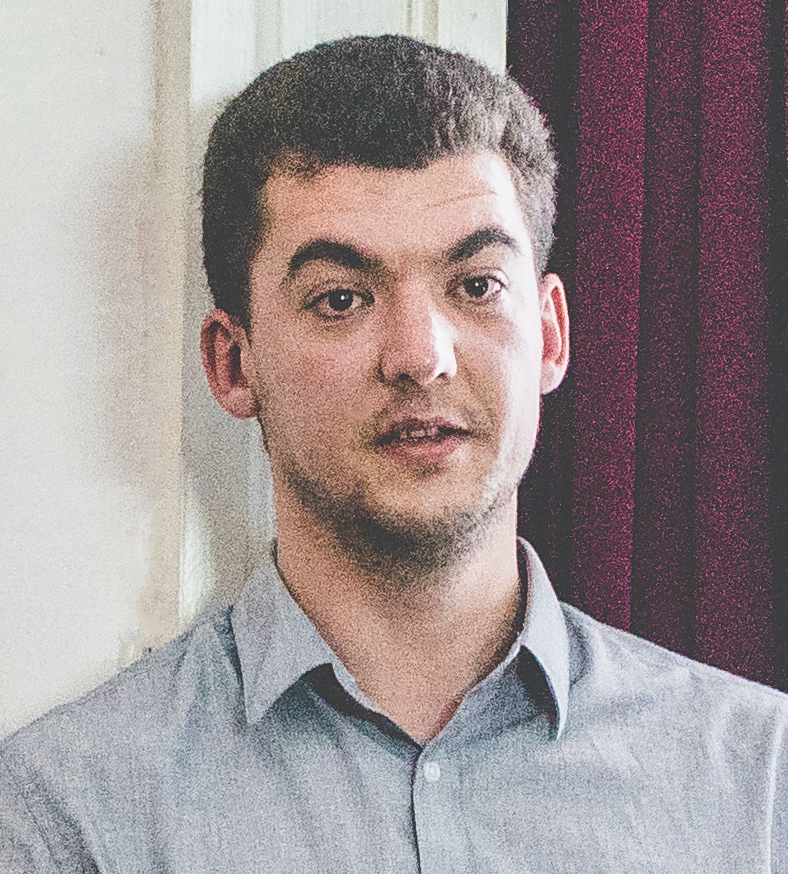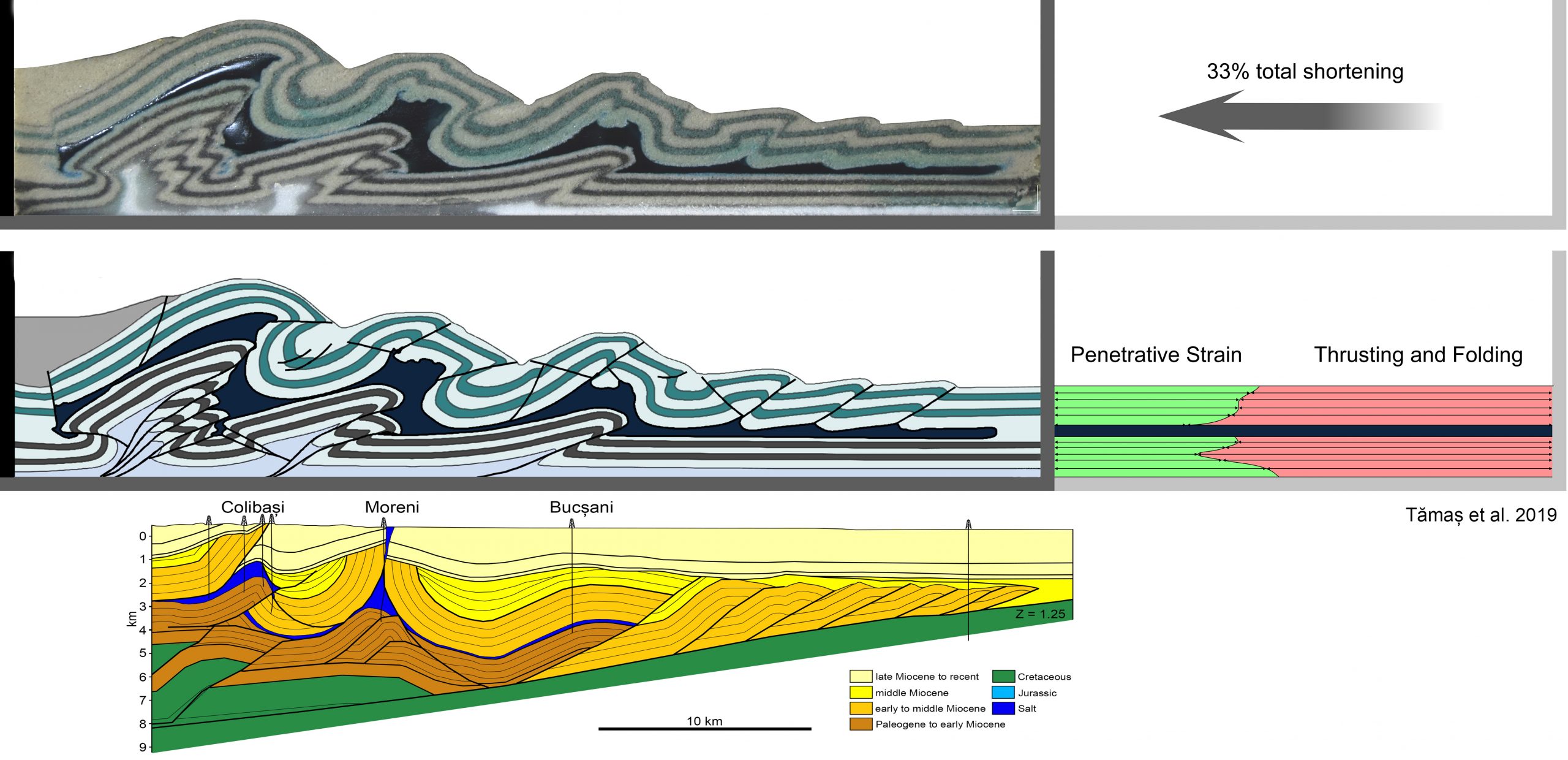Analogue / physical modelling is a research method that is over 200 years old. Its main scope is to better understand geological processes such as tectonics, sedimentation, geomorphology, and many more. The main idea behind this is to recreate these geological processes that occur in geological time (some take millions of years). Thus, to observe them, the mechanical properties of the modelled rocks, the forces and the time were scaled down (hours to days of experiment).
One such case of scaled analogue modelling experiments is the work of Tămaș et al. performed in 2019 to better understand the geometry of the structures below the salt level (area with poor geophysical data quality) in the Eastern Carpathian Bend Zone of Romania. To simplify (scale down) the rock properties, it was used glass microspheres, sand and silicone. During the experiments, several monitoring techniques were used (real-time digital elevation model analysis, particle image velocimetry, etc.). At the end of each experiment, the models were sliced and interpreted.
The above-mentioned study results offered key insights into understanding the effects of salt deformation in the area, helped to predict geometries in areas of poor seismic quality, and highlight the important contribution of penetrative strain on deformation and reservoir quality. Along with the importance of understanding the formation and deformation of the modelled structures, the study also has an impact on the economic sector.
On the main author:

Dr. Dan Mircea Tămaș acquired his Ph.D. in Geology at the Babeș-Bolyai University and has more than four years of experience working as a geologist in the hydrocarbon industry. He is also postdoctoral student at the Ph.D. School of Geology. In 2017 he established and is since leading the activities the Structural and Analogue Modelling Laboratory within the Research Center for Integrated Geological Studies, Department of Geology, Faculty of Biology and Geology.
His research interests are Structural Geology, Analogue Modelling, Salt Tectonics, Digital Outcrop Modelling and Sub-surface energy resources.
For more on the activity of the research group Dan is leading, see https://structuralmg.com/
The paper mentioned in this article can be accessed here: https://doi.org/10.1144/SP490-2019-091

